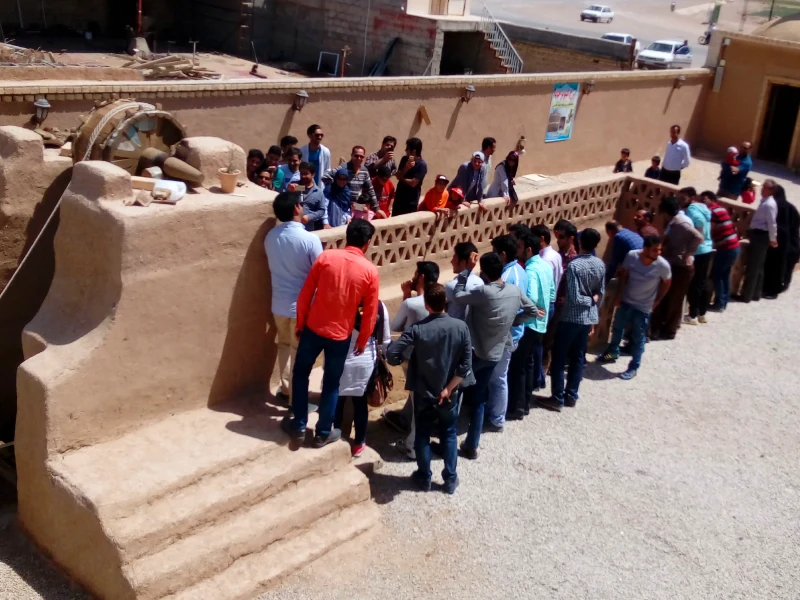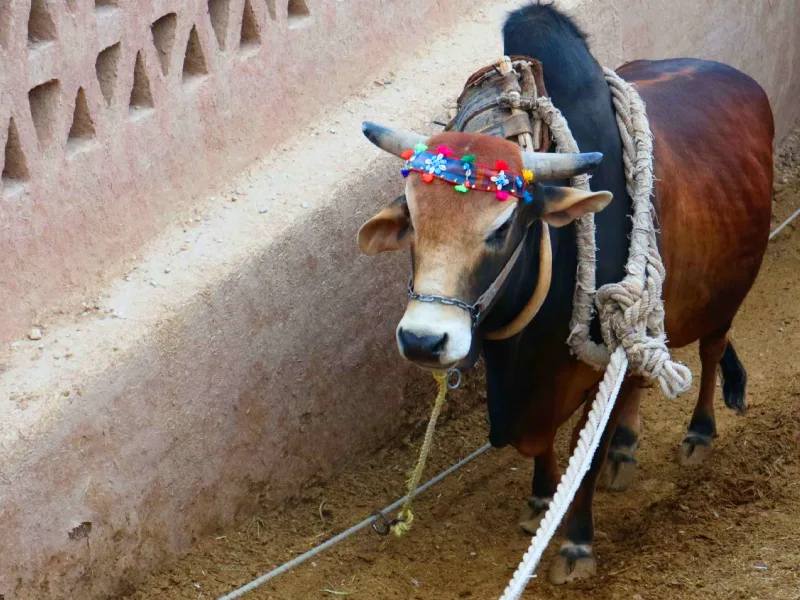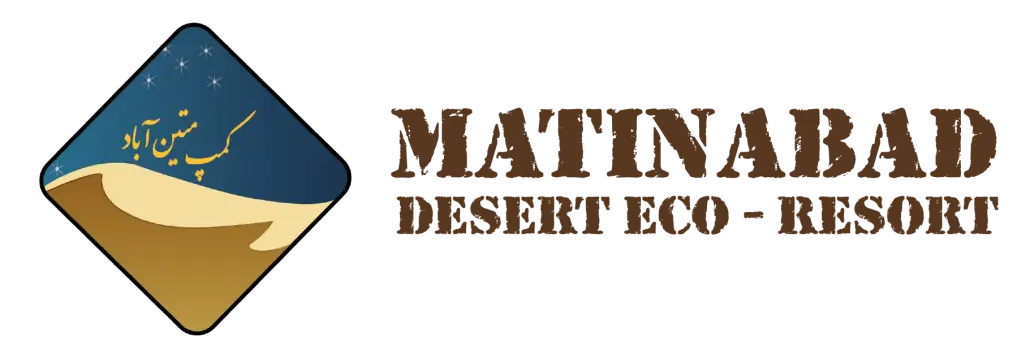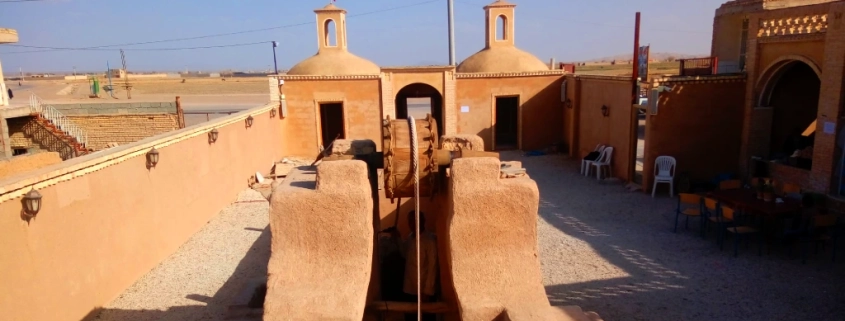Gav Chah, Varzaneh (History, Opening Hours, Reviews)
Near the city of Varzaneh in Isfahan, you will see a sign pointing to the Gav Chah, the traditional water well powered by a cow. This spot is home to a unique cow that only responds to the voice of its owner and moves to pull water from the well when it hears his song. About 15 years ago, 67-year-old Ebrahim bought two humped Sistani cows to revive this old tradition. Gav Chah is an ancient method of drawing water from wells in the eastern parts of Isfahan.
Today, people from all over Iran visit Varzaneh to see this living piece of history. Occasionally, a visitor volunteers to try singing the song, but despite their efforts, the massive cow does not budge an inch. Stay with us as we explore this fascinating tradition in more depth and learn more about its cultural significance.
Gav Chah, Varzaneh History
In the past, Gav Chah or Gavgard systems were so common that when you entered a village, the sound of these water-drawing setups filled the air. Unlike today, where we are overwhelmed by the noise of cars and honking, back then, these traditional systems were the soundtrack of rural life. In Varzaneh, a town in Isfahan known as the whitest city in Iran because of the white chadors traditionally worn by its women, an elderly man named Haj Ebrahim Heydari has revived this system.
Gav Chah is a traditional way of collecting water from wells, irrigating around 3,000 square meters of farmland twice a day, once in the morning and once in the evening. The process relies on a humped cow, usually of the Sistani breed, which moves along a sloped path to pull a bucket attached to the well’s wheel. As the cow moves, the bucket is raised, and the water is emptied and directed toward the fields.
Gav Chah: From Past to Present
During the time of thriving agriculture, farms in Iran extensively relied on this approach before modern technology was introduced. It provided a reliable way of drawing water without needing electricity or motorized pumps.

Farmers and gardeners used one or two-humped Sistani cows for this task, with the cows moving up and down a sloped surface to lift the water-filled bucket from the well, which would then be guided to irrigate the fields.
This ancient system highlights the intelligence of traditional Iranian agriculture and the way communities adapted to their environment before the advent of modern machinery.
How the Gav Chah System Works?
In the Gav Chah system, a bull goes up and down a sloped trench, about 8 meters deep, to draw water from a well. The water extraction mechanism is set up in such a way that as the bull moves downhill, the bucket fills with water and is pulled out of the well, emptying the water into a channel that leads to the fields.
When the bull moves back uphill, the bucket drops back into the well to refill. If you take a look at Gav Chah’s photos and videos, you will get a sense of how this traditional system works and can better appreciate its nostalgic, old-fashioned atmosphere.
The average depth of water in these wells is about 8 meters. However, when the water level rises, sometimes to as shallow as 4 meters, adjustments are made. A wooden branch may be placed in the trench to act as a stopper, or the rope may be shortened to match the new depth.
This adaptability shows the practical knowledge and skills of those who manage these systems and ensures efficient water extraction based on changing conditions.
Gav Chah Opening Hours
The Gav Chah in Varzaneh is active from morning until evening every day, and visitors are welcome to see it in action. The entrance fee is very affordable, and after watching Haj Ebrahim sing and guide the cow as it draws water from the well, you can explore the rest of the place. Inside the area, there are local handicrafts for sale, offering a glimpse into the region’s craft heritage.
The complex also has a traditional guesthouse and a shop selling local food products such as Kashk (a dairy product), homemade dairy items, and fruit leathers.

Additionally, there is a store selling ceramics and a workshop where you can see traditional tablecloth weaving. You can purchase souvenirs to take home as a reminder of your visit.
Gav Chah Reviews
Visitors to the Gav Chah in Varzaneh often describe it as a unique and memorable experience. Many reviews highlight the charm of watching the cow respond only to its owner’s voice, a tradition that has been carefully preserved.
Tourists appreciate the perfect combination of history and culture, noting that the site offers more than just the Gav Chah itself. The availability of local handicrafts, traditional food, and warm hospitality make it a worthwhile stop. Overall, reviews emphasize the authenticity and cultural richness of this historical attraction.
Terminology of Gav Chah
Gav Chah in Varzaneh showcases the ingenuity of ancient Persian architecture, its elements work in harmony to maintain the water supply within the structure.
1. Well: A cylindrical pit dug in the ground from which water is drawn.
2. Koka Chah: Two parallel walls, 2 to 2.5 meters high, built on either side of the well. These walls narrow as they rise to hold the wheel in place. The walls are spaced to match the diameter of the well at the bottom and taper closer as they go up to securely support the wheel.
3. Ghoochan: A sloped trench with a 40-degree angle and a length of about 10 meters where the cow moves back and forth. This movement pulls the rope (Rand rope) and rotates the wheel, ultimately lifting the water bucket from the well.
4. Yovan (Well Wheel): A wheel with a diameter of 80 to 100 cm and a width of 50 cm, positioned over the well on the Koka Chah. It rotates with the Rand rope to draw water.
5. Rand Rope: A thick rope, 4 cm in diameter and 12 meters long, with one end attached to the bucket and the other to the Patch Band rope (a four-strand rope acting as arms).
6. Patch Band Rope: A four-strand rope with holes at both ends. It folds in the middle to create two “arms,” connecting the Rand rope to the cow.

7. Kaf Bandi Rope: A 150 cm long rope that connects the right arm of the Patch Band rope to the cow’s right leg. This setup prevents the Patch Band rope from slipping off the cow’s neck during turns.
8. Tanafchi: A 1 cm thick and 14-meter-long rope connecting the bucket’s spout to the cow. The operator controls this rope to guide the cow’s movements.
9. Chambré Rope: A rope stretched along the right wall of the Ghoochan trench, connecting one end to the far side of the trench and the other to the Koka Chah wall. A loop runs along this rope, attached to the cow’s bridle, guiding the cow and preventing it from straying off course.
10. Korak Rope: A rope attached to the central well beam. It’s used to lock the wheel in place by tying it to the wheel’s spokes when needed.
11. Kole Band: A semi-circular leather strap that fits around the cow’s neck. It has leather straps at both ends, forming holes through which the Chamle passes. The Kole Band has two layers—a leather outer layer and a felt inner layer—to protect the cow’s neck from injury when pulling the Rand rope.
Final Word
Around 15 years ago, a 67-year-old man named Haj Ebrahim, who lives in Varzaneh, bought two cows from Pakistan to keep Gav Chah’s custom alive. The tradition involves using cows to draw water from a well. When Haj Ebrahim first started working with one of these cows, he sang a local melody while it was working. Over time, the cow got to know his voice, and now, after all these years, it only responds to Haj Ebrahim’s singing to move and pull water from the well. In order to make the cow move, Haj Ebrahim must sing this melody many times, which has made this Gav Chah famous throughout Iran. Many people visit Varzaneh specifically to see this unique tradition.
Varzaneh itself is a historical and touristic town near the Gavkhooni swamp, known for its women who wear traditional white chadors. In recent years, Haj Ebrahim and his sons have built a small area around the Gav Chah to provide better facilities for visitors, including space for tourists to rest. If you ever travel to Isfahan, do not miss the chance to visit the beautiful Varzaneh Desert and experience the unique Gav Chah tradition.
Are you planning to travel to Iran and looking for an Iran resort? Consider Matinabad Eco-resort.





Leave a Reply
Want to join the discussion?Feel free to contribute!